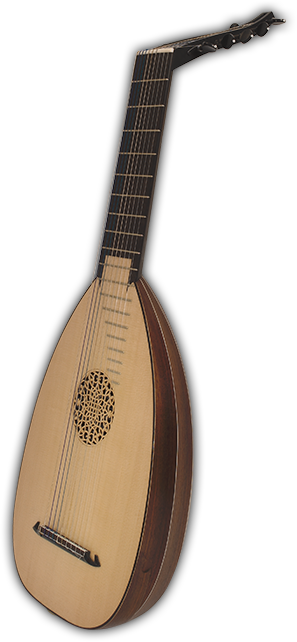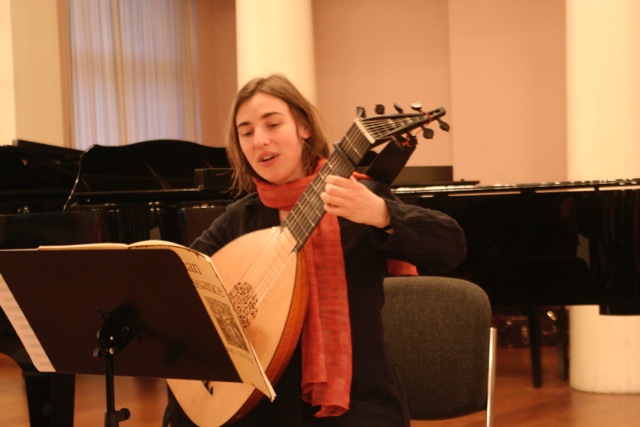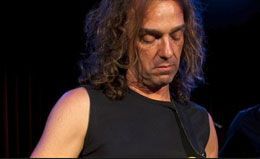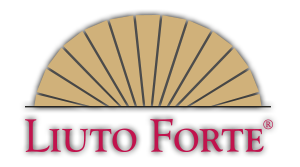Liuto forte in e (Tenor Lute)
Repertory: all compositions for tenor lute from 1500 to about 1630, when using a capo tasto on the second fret: all compositions for 6-10-course alto lute from 1500 to about 1630, arrangements of compositions for d minor lute, compositions for 6-10-string guitars as well as music of the 19th – 21st century, continuo
9- stringed, without extension: B C D E A d g (or f sharp) b e‘
- String-length 64 or 65 cm
- a’ = 440 Hz
- Single stringing
- Slightly curved fingerboard
- 19 fixed frets
- One rose, Broad body, 11 ribs
- Traditional or geared pegs
- Wood: Rosewood, Maple, Yew
(recommended: Maple)
10-stringed, with extension for A und B (double head):
A B C D E A d g (or f sharp) b e‘
- String-length fingerboard strings 64 or 65 cm
- string-length bourdun strings (graduated) 69 and 73 cm
- a’ = 440 Hz
- Single stringing
- Slightly curved fingerboard
- 19 fixed frets
- One rose, broad body, 11 ribs
- Traditional or geared pegs
- Wood: Rosewood, Maple, Yew
(recommended: Maple)

Liuti forti are delivered directly from the manufacturer and are not available from music shops.
If you would like to order a Liuto forte or need advice please send us an email.
If you wish, we can also put you in touch with Liuto-forte players in your area.
Your sense of discovery can be given free rein to determine which parts of the Spanish guitar repertoire can also be realised now on the Liuto forte, once the third string has been simply tuned to g – realised as well as or even better than on the guitar. Given the verve and tolerance guitarists have always shown in adapting lute music for the guitar, taking the process in the opposite direction should not prove an obstacle.
Samples
Please note that when recording with Liuti forti, there is no difference between the sound of the instrument in the recording and the sound of the instrument in the original. If you wish, compare the sound of the respective pieces with recordings of the same piece on copies of historical lutes that can be found on the Internet.
Silvius Leopold Weiss „Menuett a minor“
Christian Hostettler, Guitarist,
Switzerland and Germany,
Liuto forte in e, Yew

John Dowland „Preludium“
Anett Batuschka, Guitarist, Germany
Liuto forte in e with capo on 2nd fret, Yew

John Dowland „Can she excuse my wrongs“
Anett Batuschka, Guitarist, Germany
Liuto forte in e with capo on 2nd fret, Yew
Antonio Vivaldi „Triosonate in C – Dur“ (RV 82)
Duetto Giocondo
Caterina Lichtenberg & Mirko Schrader, Guitarist, Germany
Liuto forte in e, Maple
Antonio Carlos Jobim „Agua De Beber“
Peter Autschbach, Guitarist, Germany
Liuto forte in e with pickup, Rosewood
Bob Marley „I Shot the Sheriff“
Peter Autschbach, Guitarist,
and Andreas Schulz, Germany
Liuto forte in e with pickup, Rosewood

Improvisation on „Ricordame” by Joe Henderson
Peter Autschbach, Guitarist, Germany
Liuto forte in e with pickup, Rosewood
Dominic Miller “Eclipse”
Christophe Rocher, Lautenist, Frankreich
Liuto forte in e, Maple







